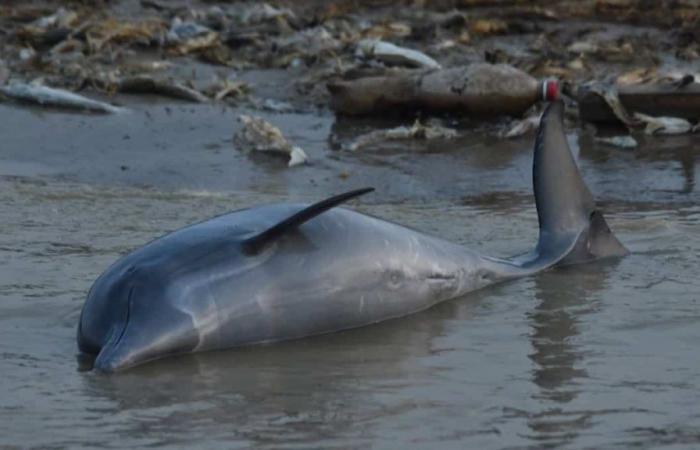In a heartbreaking incident, the Amazon rainforest in Brazil witnessed the death of 100 dolphins. This grim event was caused by an extraordinary drought and an unprecedented heat wave that hit the region, causing water temperatures to soar to record-breaking levels.
A Dire Situation Unfolds
The Mamiraua Institute, a research facility backed by the Brazilian Ministry of Science, reported this heart-wrenching discovery. Shockingly, all these lifeless dolphins were discovered in the Tefe Lake area within a span of just seven days.
A Unique Habitat Threatened
While dolphins are conventionally associated with marine habitats, the Amazon River houses freshwater dolphin species. These magnificent creatures have now faced the dire consequences of their freshwater home succumbing to environmental extremes.
Raising Alarms Over Human Impact and Climate Crisis
This tragic event is poised to raise serious concerns among the scientific community, highlighting the detrimental impacts of human activities and the severe drought conditions experienced in the region.
The Mamiraua Institute’s statement underscores the urgency of addressing this crisis: “It is still too early to definitively ascertain the cause of this extreme event. However, experts concur that it is undoubtedly linked to the extended drought period and the soaring temperatures in Lake Tefe. In certain areas, water temperatures have soared to an alarming 39 degrees Celsius (102 degrees Fahrenheit).”
Amazon River’s Dry Spell
The Amazon River, renowned as the world’s largest river system, is currently grappling with a prolonged dry season. Consequently, this has led to record-high temperatures adversely affecting various aquatic species residing in this colossal river.
A Race to Save Lives
Determined researchers and dedicated activists are in a race against time to save any surviving dolphins. Their efforts involve relocating these precious mammals from lagoons and pools along the riverbanks to the primary river channels, where the water remains comparatively cooler. However, the arduous task of relocation is compounded by the remote and challenging locations of these areas.
Complex Challenges Amid the Crisis
Andre Coelho, a researcher at the Mamiraua Institute, emphasized the complexity of the situation: “Moving river dolphins to other rivers is not a straightforward solution. It is imperative to ensure that there are no toxins or viruses present before releasing them back into the wild.”
Economic Ripples
Beyond the environmental impact, the Amazon region’s drought has sent shockwaves through the local economy. Reduced river levels have disrupted transportation and fishing activities in 59 cities within the state of Amazonas.
Anticipating Worsening Conditions
Local authorities are bracing themselves for the possibility of an exacerbation of the drought in the forthcoming weeks. This grim prospect could result in additional dolphin fatalities, compounding an already distressing situation.
A Call to Address Climate Change and Conservation
In the wake of this unprecedented ecological tragedy, scientists are issuing an urgent plea to address the multifaceted challenges posed by climate change and human activities in the Amazon—a unique and irreplaceable ecosystem that is in dire need of protection and preservation.
